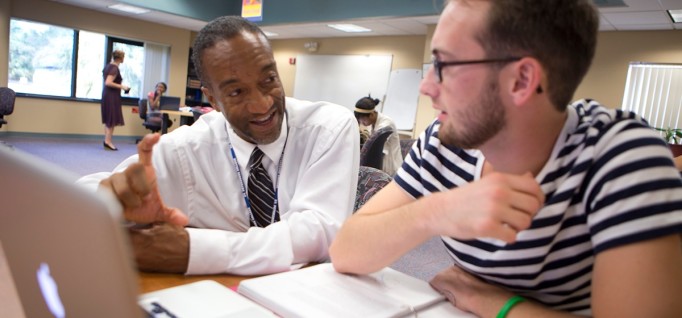How to Increase Student Engagement
By Ellen Ullman
November 13, 2015
A college in Florida uses CCSSE data and benchmarks to improve the student experience.
Earlier this year, the Center for Community College Student Engagement (CCCSE) released Engagement Rising: A Decade of CCSSE Data Shows Improvements Across the Board. Decades of studies by the organization have proved that engagement has increased across all five of the center’s benchmarks: active and collaborative learning, student effort, academic challenge, student-faculty interaction and support for learners.
“Community colleges have put a tremendous amount of effort into making new policies and practices to change the data, and our findings show a consistent, continuous improvement in engagement,” says Evelyn Waiwaiole, director of CCCSE.
Of all the takeaways from the findings, Waiwaiole says there are two things colleges can do that will go a long way toward increasing engagement: First, consider designing for scale from the start. “Far too often, we see a pilot with a few students, and it’s very challenging to move beyond that boutique program or practice,” she says. Second, colleges should focus on what needs to stop. Sometimes it’s better to quit when you’re not moving ahead.
Three Areas of Improvement
St. Petersburg College (SPC), in Florida, has assessed its practices via the CCCSE benchmarks and has seen a phenomenal increase in student success. The college has focused on improving are registration, orientation and collaborative learning.
“We make sure that every student is registered for classes before the first day of the semester,” says SPC President William Law. “It sounds logical, but often students end up taking a class just because it’s open.” In fact, the college opened spring 2016 registration in October so that students have plenty of time for counseling.
SPC also has a guaranteed schedule. “We won’t cancel a class once a student enrolls. We want students to know what their schedule will be,” Law says.
This summer, SPC offered a new noncredit course called Smart Start Orientation (SSO) for first-time college students. It’s a blended class taught by advisers and other support staff, and its purpose is to expose students to the core elements of the “college experience” and equip them with the essential skills and resources for success.
More than 5,000 students went through SSO this summer, and the results have been strong: More than 90 percent of the students have visited the career center to work on a career plan. Tonjua Williams, SPC vice president, says it’s the best response they’ve ever seen.

Based on what the college learned from former CCSSE survey data, SPC has also upped the ante on providing support learning. Faculty members work hard to encourage students to get tutoring, and many of the faculty members walk students over to the learning center or stop in to tutor students. Already this semester, there have been more than 20,000 tutoring visits logged.
Law says SPC places high value on providing support. Faculty members encourage students to use the resource center before they write term papers. Some of the faculty members even hold classes or office hours in the resource center in order to help students find what they need.
Students are more likely to approach a faculty member in the resource center than in their office,” Williams says. “It’s a more open environment that encourages small-group collaboration.”
Photos courtesy of St. Petersburg College






